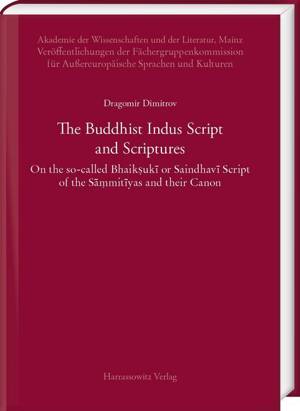
- Afhalen na 1 uur in een winkel met voorraad
- Gratis thuislevering in België vanaf € 30
- Ruim aanbod met 7 miljoen producten
- Afhalen na 1 uur in een winkel met voorraad
- Gratis thuislevering in België vanaf € 30
- Ruim aanbod met 7 miljoen producten
The Buddhist Indus Script and Scriptures
On the So-Called Bhaiksuki or Saindhavi Script of the Sa?mitiyas and Their Canon
Dragomir Dimitrov
€ 161,45
+ 322 punten
Omschrijving
The Buddhist Indus script (Sindhulipi or Saindhavi) refers to an Indian script with "arrow-headed" characters which the British Indologist Cecil Bendall (1856-1906) noticed for the first time in a twelfth-century manuscript, and which later scholars tentatively called "Bhaikṣuki". With the help of some Tibetan sources it is actually possible not only to establish its original name, i.e. "Saindhavi", but also to prove a direct connection between this script and the Saindhava monks or the Sa?mitiyas. Despite the importance of this Buddhist school, until recently its original canonical literature was considered to have been lost. Dragomir Dimitrov presents now information about the unexpected discovery of several Indian manuscripts written in Saindhavi script and offers a new analysis of the Old Bengali codex unicus of the so-called Patna Dharmapada, which should rather be known now as the Saindhavi Dharmapada. This study proves that in fact a number of original canonical texts of the Sa?mitiyas and some of their post-canonical works have survived. The texts are written in a Middle Indian language which it is suggested here to call "Saindhavi". The better understanding of the close link between the Sammitiyas/Saindhavas, the Saindhavi language, and the Saindhavi script permits to fill some glaring gaps in Buddhist studies and Indian linguistics.
Specificaties
Betrokkenen
- Auteur(s):
- Uitgeverij:
Inhoud
- Aantal bladzijden:
- 256
- Taal:
- Engels
- Reeks:
- Reeksnummer:
- nr. 7
Eigenschappen
- Productcode (EAN):
- 9783447113854
- Verschijningsdatum:
- 18/03/2020
- Uitvoering:
- Hardcover
- Formaat:
- Genaaid
- Afmetingen:
- 155 mm x 231 mm
- Gewicht:
- 385 g

Alleen bij Standaard Boekhandel
+ 322 punten op je klantenkaart van Standaard Boekhandel
Beoordelingen
We publiceren alleen reviews die voldoen aan de voorwaarden voor reviews. Bekijk onze voorwaarden voor reviews.










